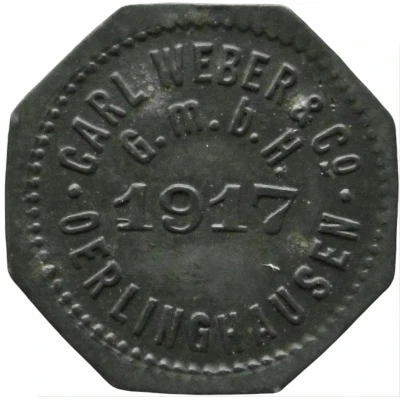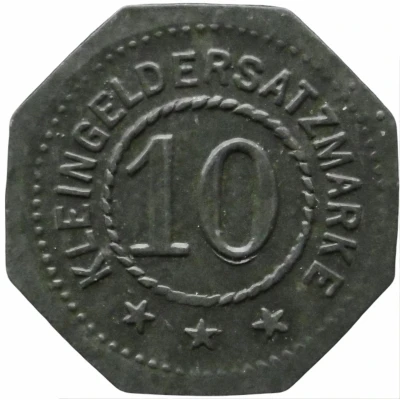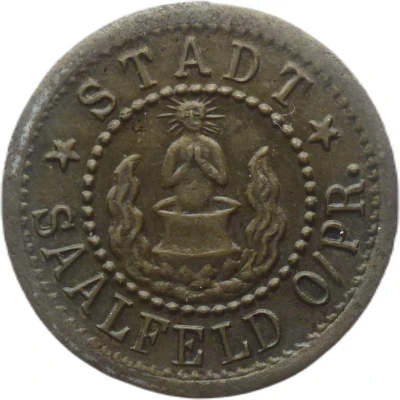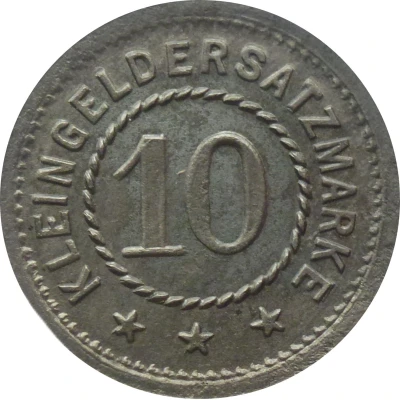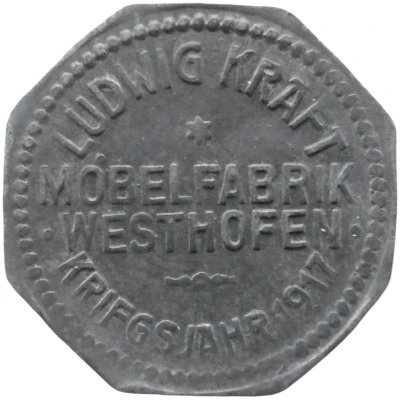
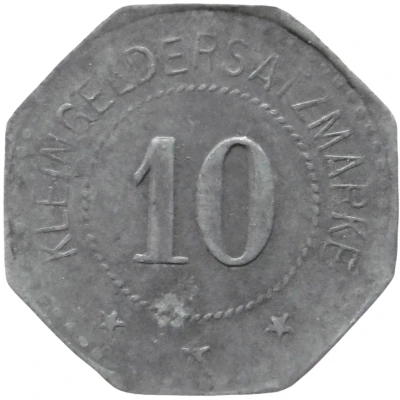

© Willem63 (CC BY-NC-SA)
10 Pfennigs - Westhofen Ludwig Kraft Möbelfabrik
1917 year| Zinc | 2.1 g | 20.8 mm |
| Issuer | German notgeld (Germany) |
|---|---|
| Emperor | William II (Wilhelm II) (1888-1918) |
| Type | Standard circulation coin |
| Year | 1917 |
| Value | 10 Pfennigs (10 Pfennige) (0.10) |
| Currency | Mark (1914-1924) |
| Composition | Zinc |
| Weight | 2.1 g |
| Diameter | 20.8 mm |
| Thickness | 1.0 mm |
| Shape | Octagonal (8-sided) |
| Technique | Milled |
| Orientation | Medal alignment ↑↑ |
| Demonetized | Yes |
| Updated | 2024-10-04 |
| Numista | N#296023 |
|---|---|
| Rarity index | 97% |
Reverse
Pearl rim, legend surrounding rope circle with denomination centered
Script: Latin
Lettering:
KLEINGELDERSATZMARKE
10
★ ★ ★
Edge
Plain
Comment
Menzel: BBBInteresting fact
The 10 Pfennigs - Westhofen (Ludwig Kraft Möbelfabrik) 1917 coin from German notgeld (Germany) made of Zinc weighing 2.1 g is interesting because it was produced during a time of economic crisis and hyperinflation in Germany, specifically during World War I. The coin was part of a series of emergency currency, also known as "notgeld," which means "emergency money" in German. The coin's design features the image of a horse and a tree, which symbolizes strength and stability, and was likely intended to convey a sense of hope and resilience during a difficult period in German history.
